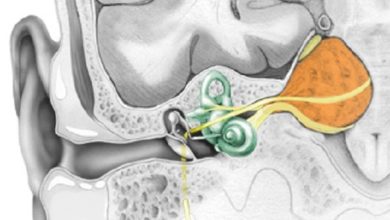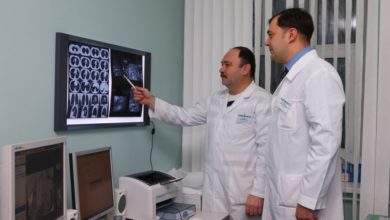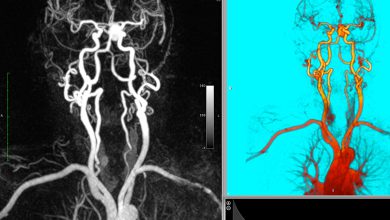Meningioma of the head
The content of the article
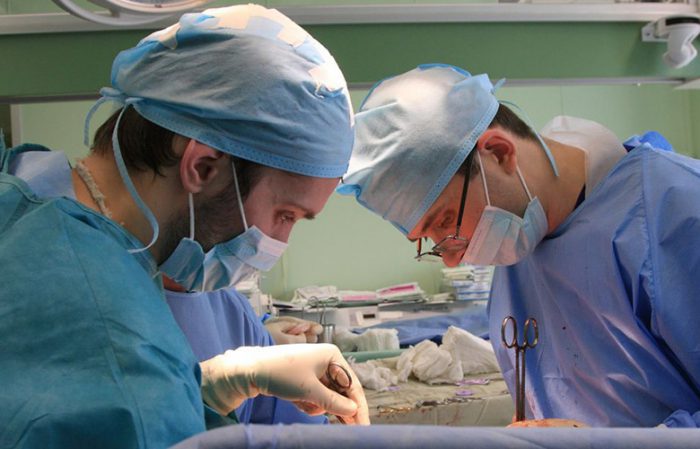
Meningioma of the head is a tumor that is located in the brain, looks like a dense node in the shape of a ball or horseshoe. Quite often it grows together with the dura mater of the brain. Typically, this disease can be classified as benign tumors; the vast majority of those diagnosed belong to them. In turn, malignant varieties appear much less frequently and have a high probability of relapse.
Currently, there are no obvious reasons for the appearance of this tumor. There are certain factors that appear most often. Typically developing after the age of 40, women are three times more likely to have the disease due to female hormones. At the same time, men, if they develop meningioma, receive a malignant variant.
Symptoms
Such tumors grow in size rather slowly, making it difficult to detect the main symptoms in time. One of the primary symptoms can be called common headaches. Moreover, what is important, they do not have unique features. In other words, the pain can be either dull or sharp, bursting or aching. The localization of such pain usually occurs in the back of the head or temples.
All other symptoms are directly related to the location of the tumor, or more precisely, to those parts of the brain that it can affect through compression. These signs are called focal:
- weakness, seriously weakened sensitivity, pathological reflexes;
- visual disturbance, probably drooping of the upper eyelid;
- hearing problems;
- sharply reduced sense of smell, even to the point of hallucinations;
- epilepsy attacks;
- problems with the implementation of mental activity;
- increased pressure inside the eye if a meningioma is nearby;
- psychological problems;
- problems with coordination;
- severe nausea, vomiting does not relieve the condition.

In addition, various secondary factors are possible. Often people do not think about the reasons and simply use various painkillers for severe headaches. Meningioma can be the cause of such pain, especially if the pain is regular, and these medications relieve the symptoms and the person does not consult a doctor on time.
It is important that all people understand that if there is at least one of the signs indicated above, they should definitely seek the necessary medical help.
Types of tumors
Speaking about meningiomas, it should be noted that there are several types of tumors: benign, atypical, malignant. The most common type is benign meningioma. Next, the main types of meningioma will be identified depending on where exactly the tumor is located.
Falx meningioma of the brain . The prognosis for life in this case can only be given after a biopsy. It is determined quickly: gradually, as the disease develops, the human organs begin to function incorrectly, and there is a high probability of paralysis of the lower extremities.
Parasagittal meningioma. It is characterized by the fact that it is formed in the area of the groove in the center of the brain, sometimes attached to the sinus of the same name. This type of tumor is accompanied by numbness of body parts, convulsions, and epileptic seizures. Moreover, if the right part of the brain is damaged, the left side of the body will suffer, respectively, if there are problems in the left part of the brain, the right side will suffer.
Anaplastic meningioma . This type of tumor is malignant and appears more often in men. There are practically no symptoms and it is very difficult to identify.
Convexital meningioma of the right frontal region, left frontal region, occipital, frontal or parietal part is a fairly common type of tumor due to the fact that it can be located in different lobes of the brain. In case of incorrect surgical intervention, it leads to a large number of complications of varying severity.

Psammomatous meningioma . Occurs in the plexuses of various vessels and connective tissues. It consists of psammoma bodies, from which the name of the tumor comes.
Petrified type of meningioma. Usually accompanied by significant weakness of the body, nausea, leading to vomiting and excessive fatigue. In the case of rapid treatment, problems may occur, including disability. Moreover, it is worth noting that disability is possible even with successful treatment.
Fibrous meningioma of the brain is a type of tumor that consists of fibroblast-like cells. They are parallel to each other, look like bunches, which are sometimes able to concentrate in one place.
Tumor diagnosis
It is important to note that meningioma is a very dangerous type of disease. Without a competent and comprehensive examination, it is very difficult to detect it. And the initial stage is characterized by complete impossibility of diagnosis. Its symptoms are very similar to many other diseases, which, accordingly, leads to the fact that it is sometimes confused with other types of neoplasms inside the skull.
To make a correct diagnosis, you need to make an appointment with a neurologist. It is this specialist who, using various tests, carries out the most complete examination of all human reflexes. These tests make it possible to accurately assess the level of damage to various functions of the patient’s brain. In the future, much more accurate studies will be carried out to identify the cause of the formation of these symptoms in each individual case.
The most commonly used in modern medicine are X-rays, computed tomography and MRI . MRI and CT make it possible to determine the exact picture of the disease and visualize each layer of the brain on the screen, which allows a qualified doctor to clarify the level of complexity of the disease, the location of the tumor, and determine its size. If it is not possible to detect meningioma on a regular MRI, an even more advanced test is used - MRI with contrast. This term refers to the introduction of a special substance, which makes it possible to obtain an image more accurately and clearly.

How to treat meningioma?
As a rule, to eliminate this type of tumor, a complex treatment method is used in practice, consisting of two separate methods: radiation therapy and surgery. Brain meningioma is, as a rule, a benign tumor; therefore, chemotherapy as the most radical method will be the last type of treatment. It is prescribed only after surgery and radiation therapy show a negative result.
As a rule, treatment is first carried out, which is aimed at some reduction in the general swelling of the tissues surrounding the meningioma. After this, the main goal becomes the elimination of inflammatory processes occurring in the brain. A qualified specialist in this situation prefers to prescribe special drugs that are based on corticosteroids. In the case where the tumor is accompanied by symptoms such as seizures, various anticonvulsants are used, whose goal is to eliminate this symptom. When meningioma appears in a certain place where it interferes with the normal circulation of cerebrospinal fluid, surgical intervention is performed to completely restore it.
Treatment with surgery
Due to the fact that meningioma is the main example of benign formations, it is not capable of metastasizing and penetrating into other parts of the brain, has clearly defined boundaries and can be excised at a time. Most often, doctors do not see any contraindications and diagnose benign meningioma. Surgery, which is prescribed as the main method of treatment, is almost always successful. If the tumor is superficial, then it can be completely removed, which is equivalent to a complete cure. The operation should be prescribed only when its implementation will be relatively uncomplicated and there is virtually no risk of damage to adjacent healthy tissue. From a technical point of view, meningioma of the falx cerebri is the most difficult to remove.
First, the patient's skull is opened in the place where the tumor is located. After this, using special tools, a whole team of specialists begins to perform actions aimed at completely removing the meningioma. Certain problems arise only if the tumor has penetrated as deeply as possible into the patient’s brain. Moreover, it is worth separately clarifying that in the case of incomplete removal of meningioma, the possibility of its return in a few years is quite likely.
Separately, it is necessary to note the time period required for the surgical type of treatment. When a person is diagnosed with meningioma, the length of surgery and recovery period will be unique to almost each individual case. It all depends on the characteristics of the tumor, the characteristics of the human body, the qualifications of doctors and a number of other very important factors.
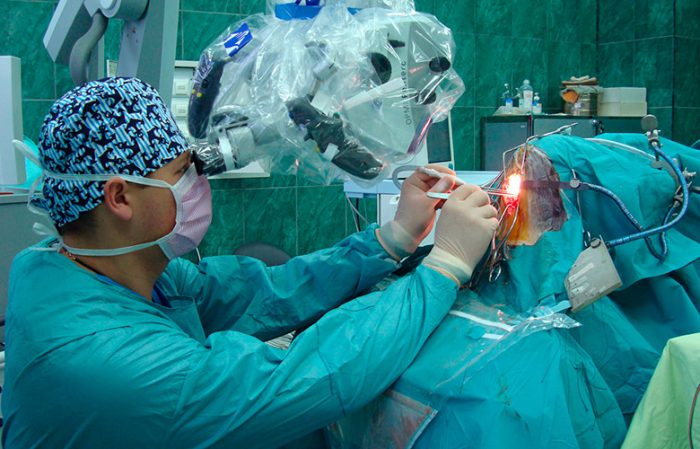
Treatment with radiation therapy
Despite the fact that radiation can be one of the causes of tumor formation, it is used as a treatment. Typically, at least 5 sessions lasting about 40 minutes are required. During these sessions, meningioma is irradiated from the same position. Sometimes, when the situation is extremely advanced, this type of treatment is used for several weeks, which can lead to partial baldness of the patient in the area of the skin where irradiation is performed. As a side effect, swelling occurs after radiation therapy for meningioma.
In general, it is worth noting that radiation therapy is currently losing its position. Of course, it is used in cases where surgical intervention is not possible, but there are more modern technologies that are gradually pushing radiation therapy out of the main methods of treating brain tumors in general and meningiomas in particular.
Modern radiosurgery
It is stereotactic radiation therapy that makes it possible to deliver radiation from several positions. This is achieved by using fundamentally new technologies. The tumor receives a critical dose of radioactive radiation over a very short period of time, while healthy areas of the brain adjacent to the tumor are not irradiated. This type of treatment is used when surgery is not possible. It is absolutely painless. It is actively developing.
When a brain meningioma is removed after a long illness, the consequences and reviews differ from patient to patient, depending on the treatment method, its complexity, and the severity of the disease. However, most often they are positive and even in less favorable situations, when they have to be seen by doctors, people are really happy that they can live a full life again.
Please rate the article:

 (6 ratings, average: 4,83 out of 5)
(6 ratings, average: 4,83 out of 5)
